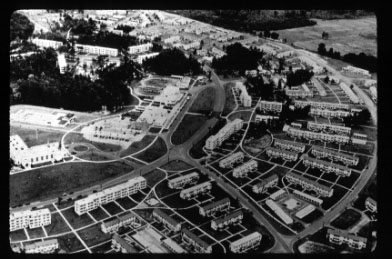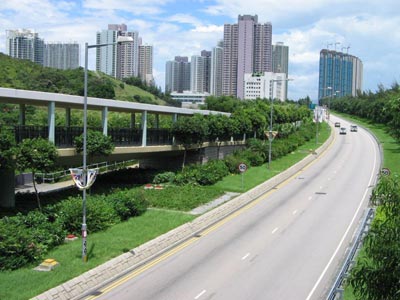
 |
||||
|
|
|
|
|
|

Greenbelt, Maryland Areal View (1937)
Small villas found scattered in middle to upper class suburbia are a perfect example of the virtues of good planning. Many of these villas are constructed in one long string of construction, and have the infrastructure built right in. Typically a large quantity of homes will be constructed in close proximity to existing grocery stores, schools, and other services or new services are brought in specifically for the new community. These kinds of structured communities put everything in one place, reducing the need for transportation and overall making a better use of the space. The one of the larger bubbles of pre-planned construction projects in America occurred during the Depression in the form of the New Deal program. Communities such as Greenbelt Maryland, settled in 1937, were planned and constructed from the ground up as a self-sufficient unit. Another example of planned development, some will question how good, is Columbia Maryland, which started planning and development in about 1960 and opened in 1967. 
Tung Chung New Town - View towards the city center from Yat Tung Estate; Fu Tung Estate in the foreground
Due to budget and the constant flux of supply and demand anything much beyond current planning generally can be considered a utopian view. It would be wonderful if we could tear down any current city and re-build it from the ground up. However doing something like that would require a great deal of time and money, both of which are constantly in short supply. I believe that, even though difficult to do, cities would benefit from more coherent planning. Having an overarching master plan and managing new construction so that it takes place in the best way possible are essential for relieving problems in city such as traffic. Important infrastructure such as transportation and power, which typically follows in the wake of development, should always precede the development. |
| Resources |
|
"Urban Planning". Wikipedia, the free encyclopedia. 2004. Wikimedia Foundation, Inc. 8 Dec 2004. http://en.wikipedia.org/wiki/Urban_planning "Planning Greenbelt, Maryland". Virtual Greenbelt. 2001. Department of American Studies. 8 Dec 2004. http://www.otal.umd.edu/~vg/domestic/planning.html "Columbia Maryland.com" 2004. 8 Dec 2004. http://www.columbiamaryland.com/ |